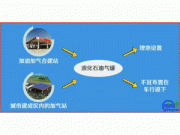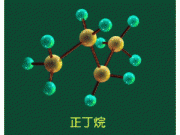免职声明:本网站为公益性网站,部分信息来自网络,如果涉及贵网站的知识产权,请及时反馈,我们承诺第一时间删除!
This website is a public welfare website, part of the information from the Internet, if it involves the intellectual property rights of your website, please timely feedback, we promise to delete the first time.
电话Tel: 19550540085: QQ号: 929496072 or 邮箱Email: Lng@vip.qq.com
摘要:Small Scale LNG Unit, Large Scale Potential A micro-production LNG plant developed by a team at CurtinUniversity in Perth looks set to revolutionise the "little-end" of the gas industry and create significant opportunities for otherwise stranded g..
|
Small Scale LNG Unit, Large Scale Potential A micro-production LNG plant developed by The LNG Micro-Cell was designed by Professor Robert Amin who began work on the concept in Europe and brought the work with him to "The technology actually dates back more than a decade," Dr Barney Glover, Director of Research and Development told AEN. "Petroleum engineer, Robert Amin, was interested in pressure, volume, temperature (PVT) testing equipment in the gas industry. The Micro-Cell is the result of a whole history of development of PVT equipment at lower and lower temperatures." "Up until now, the study of gases under extreme conditions of pressure, volume and temperature, for quality control in the gas industry was unacceptable because the equipment used was not capable of analyzing natural gas at cryogenic temperatures, -161oC. For the first time, we can actually see the phase change behaviour of natural gas as it happens through the observation window of the Micro-Cell unit," Dr Glover said. Previously, laboratory technology has been unable to operate satisfactorily at the requisite cryogenic temperatures and therefore only provided extrapolated data needed for the design and operation of liquid natural gas plants. Unlocking the Gas The Micro-Cell is more than just a prototype, it is a working mini-LNG train that can produce up to 1,500 litres of liquid natural gas, from the injection of around 30,000 cubic feet of intake gas per day. Dr Glover said a major portion of the world's gas resources are in remote locations or locked up in small deposits and far from pipeline infrastructure. In other words, a significant volume of our natural gas resources are undeliverable and the technology to liquefy and transport gas in these quantities was uneconomical. That is, until now. "The possibility of producing LNG to niche demand for a whole variety of opportunities is about to be realized," Dr Glover said. "You can set the Micro-Cell up anywhere along a natural gas pipeline or put it on the back of a truck or out to sea because it is compact and mobile." The unit is also very scaleable. The industry partners are working with Metasource, a wholly owned subsidiary of Woodside Petroleum, to scale the plant up to create a transportable unit that will produce 50,000-100,000 litres per day output. This would put it in the 1-2 million standard cubic feet of gas per day range, which is still relatively small, but if commercial, will be big enough to make a lot of stranded gas fields viable. Alan Jackson, Project Manager at Metasource, is enthusiastic about the potential of Dr Glover said the team was already looking at the potential for upscaling the technology into the 10 million cubic feet per day range. One of the exciting aspects of this technology is not only its small, niche market scale, but it has the advantage of being able to liquefy untreated gas. Large LNG trains have to pre-treat the intake gas to remove impurities, for example carbon dioxide and other impurities that clog the process, but the Micro-Cell can handle quite high levels of contaminants in the intake gas so you get a substantial efficiency saving in the pre-processing stage. "We're working closely with Metasource and Core Laboratories to evaluate the technology at the moment," he said. "Core Laboratories sees it not only as quality control equipment for the gas industry but to supply niche opportunities for small scale LNG production where you can replace the need for large gas storage tanks on site. You can liquefy gas as the need arises." Exceeding Objectives Tony Kennaird, Regional Manager Core Laboratories Australia said, "The project greatly exceeded our initial objectives. We designed the Micro-Cell to be a laboratory testing module. However, we quickly became aware of its potential as a small to medium scale LNG production plant. The test module runs on electrical power but we are doing extensive research into using LNG to power the system." "The key component to the technology is the 'cyclonic separation system,' which radically changes the pre-treatment of the intake gas. Traditional LNG plants spend the bulk of their money on the pre-treatment part of the process and up until now, lots of people have tried to miniaturise this type of natural gas liquefaction equipment without success." "The Micro-Cell provides a 25 per cent reduction in cost per cubic foot of gas as opposed to a larger LNG train. This makes the system remarkable when you consider that normally when you get large-scale technology and down-size it, you substantially increase the cost of the exercise. Needless to say, our phones are ringing off the hook." In February 2000, Core Laboratories Australia and the |

















